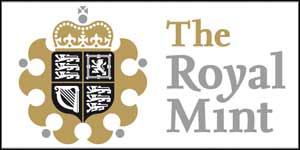ONE IN THE EYE FOR HAROLD. ROYAL MINT 50P COMMEMORATES HASTINGS
A busy year for the Royal Mint with its seven-sided 50 pence commemorative coins, highlighted by the hugely popular Beatrix Potter series. We’ve recently seen a nice 2016 Olympics 50p coin, and now we’re being treated to one commemorating the 950th anniversary of the pivotal Battle of Hastings.
The Battle was fought on 14 October 1066 between the Anglo-Saxon King Harold Godwinson, fresh from defeating a Norse army at Stamford Bridge, and Duke William II of Normandy. Despite being outnumbered, the Norman army failed to break Harold’s well placed defensive line close to the present-day town of Battle, East Sussex. Feigning retreat, the undisciplined English broke ranks to chase them down. As a result, the Norman cavalry and infantry routed the now scattered Anglo-Saxon infantry and the battle was won. Harold is said to have been killed by an arrow through the eye.
To celebrate the victory, a tapestry was commissioned in the 1070s, likely by Bishop Odo, Williams half-brother. Despite popular belief, the tapestry was likely made in England. A staggering 70 metres long and 50 centimetres high, it consists of some fifty scenes with Latin tituli, embroidered on linen with coloured woollen yarns. The tapestry is on display in France at the Musée de la Tapisserie de Bayeux in Bayeux, Normandy.
The most famous scene on the tapestry is the image of King Harold with an arrow in his eye and it’s this that the Royal Mint have chosen to adorn the new 50 pence coin. The base coin is struck in 8g of sterling silver, with a double-thickness piedfort version also available, along with a 22kt gold. All share an identical size, the only difference being the thickness. The obverse, as expected, features the new Jody Clark effigy of Queen Elizabeth II, along with all the usual UK inscriptions except the date, which sits on the reverse face.
It’s a great design, very clean, very iconic if history is your thing. Packaging is classic Royal Mint so no complaints there. Price is an issue for us however, as with most of the mint’s 50 pence coins. At £50.00 for a quarter ounce of sterling silver, it’s a relatively pricey coin, especially considering design costs have been covered by the circulating version. Even worse, the piedfort version is double the weight, but double the price. Given everything else is equal and the only difference being the piedfort is thicker and incorporates an extra £5 of silver, we fail to see how the doubling in cost is remotely justifiable. Design, packaging and all the other costs are the same, so the extra metal is the only variance. The gold isn’t too bad at all in comparison. A fine coin, but one you’ll need to dig deep for. The standard silver would be our choice. Available now.
REVERSE SIDES
MINTS DESCRIPTION
On 14 October 2016 Britain will remember the 950th anniversary of The Battle of Hastings. In recognition of this significant moment in British history, The Royal Mint has struck precious metal variants of the 50p coin that marks the occasion, following on from the earlier issue of the Brilliant Uncirculated coin.
The 50p coin features a reverse design by sculptor John Bergdahl depicting the famous fate of King Harold, with the all-important date taking centre stage.
Anne Jessopp, The Royal Mint’s Director of Commemorative Coin, said: “1066 is arguably one of the most famous dates in English history and one that altered the nation’s timeline forever. As we build towards the 950th anniversary of The Battle of Hastings, it is timely that we commemorate this great historical anniversary on a 50p coin.”
The coin carries the fifth portrait of Her Majesty The Queen on its obverse, and has now been struck in Limited Edition Presentation Gold Proof (350 coins), Silver Proof (3,000 coins) and Silver Proof Piedfort (1,500 coins) editions. The public can expect to see the circulating version of the design appear in their pocket change later this year.
PACKAGING & OBVERSE
THE DESIGNER, JOHN BERGDAHL
Seasoned coinage artist John Bergdahl has created a number of designs for The Royal Mint covering a variety of themes: celebrating royal occasions, including the birth of Her Royal Highness Princess Charlotte Elizabeth Diana of Cambridge, commemorating the First World War and recalling important events in our history, such as anniversaries of the launch of the Mary Rose and the creation of the Magna Carta.
For this reverse, artist John Bergdahl looked to the visual account of the battle, the Bayeux Tapestry, for inspiration.
“The Bayeux Tapestry formed the basis for this design, as it is so famous and the only real visual record of the battle. The design, much like the reverse for the Magna Carta £2, is inspired by the medieval, it’s very much of the period when the battle took place.
The figure in the composition is based on images thought to be King Harold, with the famous arrow to the eye. The all-important date is at the centre of the arrangement.” John Bergdahl
SPECIFICATION
| DENOMINATION | COMPOSITION | WEIGHT | DIAMETER | FINISH | MINTAGE (TOT) |
BOX / COA |
|---|---|---|---|---|---|---|
| 50P UKP | 0.9167 GOLD | 15.5 g | 27.3 mm | PROOF | 350 (500) | YES / YES |
| 50P UKP | 0.925 SILVER | 16.0 g | 27.3 mm | PROOF | 3,000 (1,500) | YES / YES |
| 50P UKP | 0.925 SILVER | 8.0 g | 27.3 mm | PROOF | 6,000 (3,000) | YES / YES |














Leave A Comment